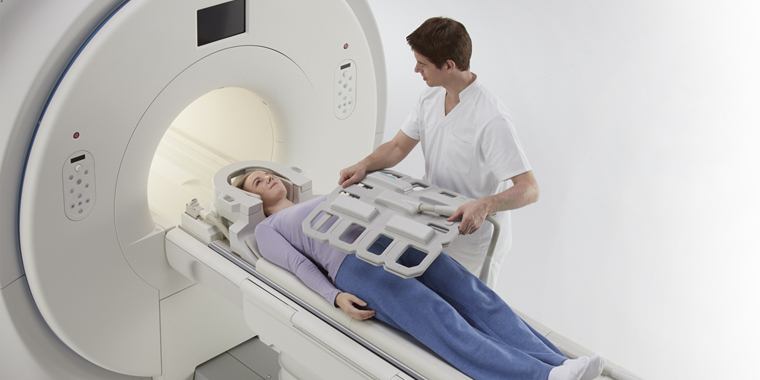The design and application of coreless motors in medical magnetic resonance instruments (MRI) are of great significance, especially in improving imaging quality, scanning speed and patient comfort. Medical magnetic resonance is a non-invasive imaging technology widely used in medical diagnosis and can provide high-resolution soft tissue imaging. In order to achieve efficient imaging and operation, each component of the instrument must have high precision and stability, and the coreless motor plays a key role in this process.

Design requirements
In medical magnetic resonance instruments, the design of coreless motors needs to meet several key requirements. First, the motor must have high rotational speed and high-precision control capabilities to ensure that the relative position of the sample (i.e., patient) can be quickly and accurately adjusted during imaging. The patient needs to remain stable during the scanning process, and precise control of the motor can effectively reduce motion artifacts and improve imaging quality.
Second, the noise level of the motor must be as low as possible to avoid interference with the imaging signal. The imaging signal from a medical magnetic resonance machine is usually very weak, and any additional noise may cause distortion or loss of the signal. Therefore, the vibration and electromagnetic interference of the motor need to be considered during design to ensure that it does not have a negative impact on the signal during operation.
In addition, the size and weight of coreless motors are also important considerations in the design. Medical magnetic resonance instruments usually need to operate efficiently within a limited space, so the compact design of the motor can effectively save space and improve the overall integration of the instrument. At the same time, the material selection of the motor is also crucial. It must have good temperature resistance and antimagnetic properties to adapt to the working environment of the medical magnetic resonance instrument.
Application examples
In practical applications, coreless motors are mainly used for the movement and rotation of patient beds. By precisely controlling the movement of the patient bed, researchers and doctors can ensure the patient’s position during the scan is accurate. For example, when imaging the brain or spine, the patient’s posture and position directly affect the clarity and accuracy of the imaging. The coreless motor enables fast and precise bed position adjustment, thereby improving scanning efficiency and reliability of results.
In addition, coreless motors can also be used to adjust the uniformity of the magnetic field. The signal strength and clarity of magnetic resonance imaging are closely related to the uniformity of the magnetic field. By adjusting the rotation of the motor, the magnetic field can be fine-tuned to optimize the signal collection effect. This adjustment capability is particularly important in high-field medical magnetic resonance instruments, where magnetic field inhomogeneities at high fields can significantly affect imaging quality.
Patient comfort
Patient comfort is also an important consideration in the design of medical magnetic resonance machines. The low noise and low vibration characteristics of the coreless motor can effectively reduce the patient’s discomfort during the scanning process. In addition, the motor’s rapid response capability shortens scan times and reduces the time the patient spends inside the instrument, thereby improving the overall patient experience.
Future development
With the continuous advancement of medical magnetic resonance technology, the requirements for coreless motors are also constantly increasing. In the future, motor intelligence and automation will become a development trend. By introducing advanced control algorithms and sensor technology, coreless motors can achieve more precise real-time monitoring and adjustment. This not only improves the automation of scanning, but also reduces errors caused by human operations.
In addition, with the development of material science, the application of new high-performance materials will further improve the performance of coreless motors. For example, using lightweight and high-strength materials can reduce the weight of the motor and improve its response speed and stability. At the same time, the application of low-temperature superconducting materials may also provide new solutions for magnetic field regulation of medical magnetic resonance instruments.
In conclusion
In summary, the design and application of coreless motors in medical magnetic resonance instruments is a complex and important topic. By optimizing the design and control of the motor, the performance of the medical magnetic resonance instrument can be significantly improved, thereby promoting the development of medical imaging. With the continuous advancement of technology, coreless motors will play a more important role in future medical magnetic resonance applications.
Writer : Sharon
Post time: Oct-22-2024

